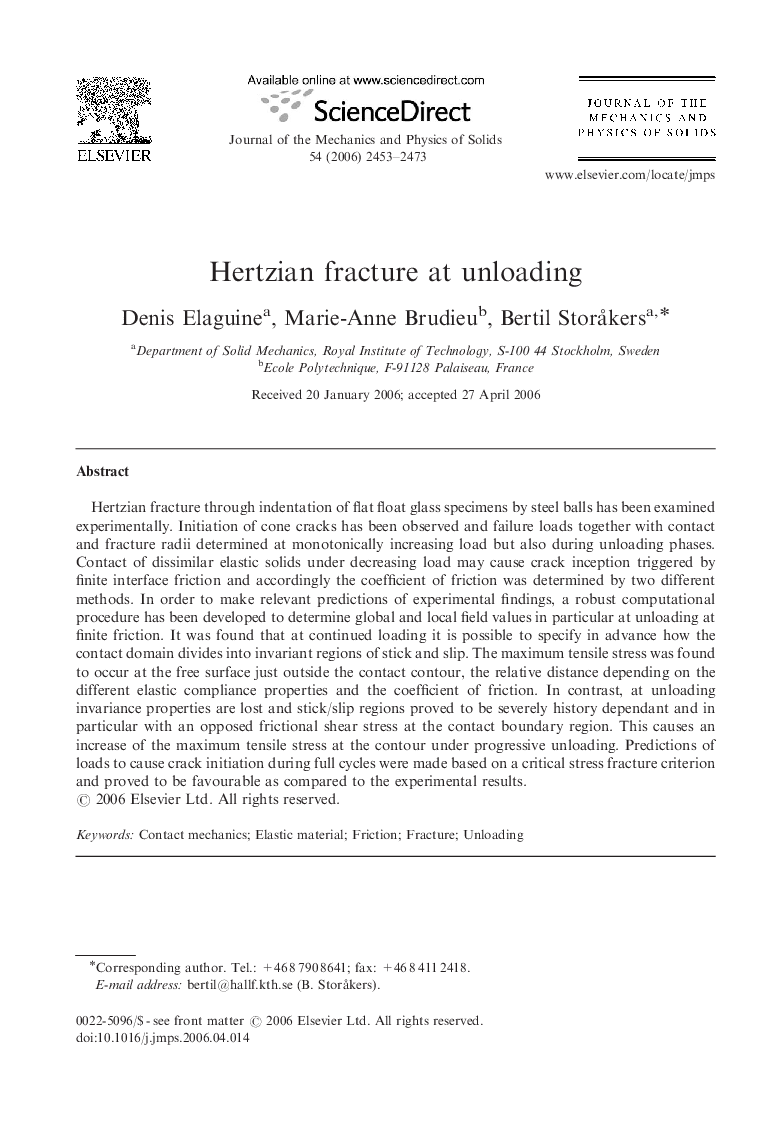| Article ID | Journal | Published Year | Pages | File Type |
|---|---|---|---|---|
| 800201 | Journal of the Mechanics and Physics of Solids | 2006 | 21 Pages |
Hertzian fracture through indentation of flat float glass specimens by steel balls has been examined experimentally. Initiation of cone cracks has been observed and failure loads together with contact and fracture radii determined at monotonically increasing load but also during unloading phases. Contact of dissimilar elastic solids under decreasing load may cause crack inception triggered by finite interface friction and accordingly the coefficient of friction was determined by two different methods. In order to make relevant predictions of experimental findings, a robust computational procedure has been developed to determine global and local field values in particular at unloading at finite friction. It was found that at continued loading it is possible to specify in advance how the contact domain divides into invariant regions of stick and slip. The maximum tensile stress was found to occur at the free surface just outside the contact contour, the relative distance depending on the different elastic compliance properties and the coefficient of friction. In contrast, at unloading invariance properties are lost and stick/slip regions proved to be severely history dependant and in particular with an opposed frictional shear stress at the contact boundary region. This causes an increase of the maximum tensile stress at the contour under progressive unloading. Predictions of loads to cause crack initiation during full cycles were made based on a critical stress fracture criterion and proved to be favourable as compared to the experimental results.
